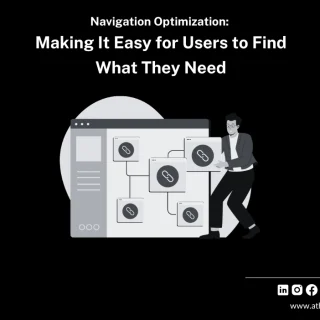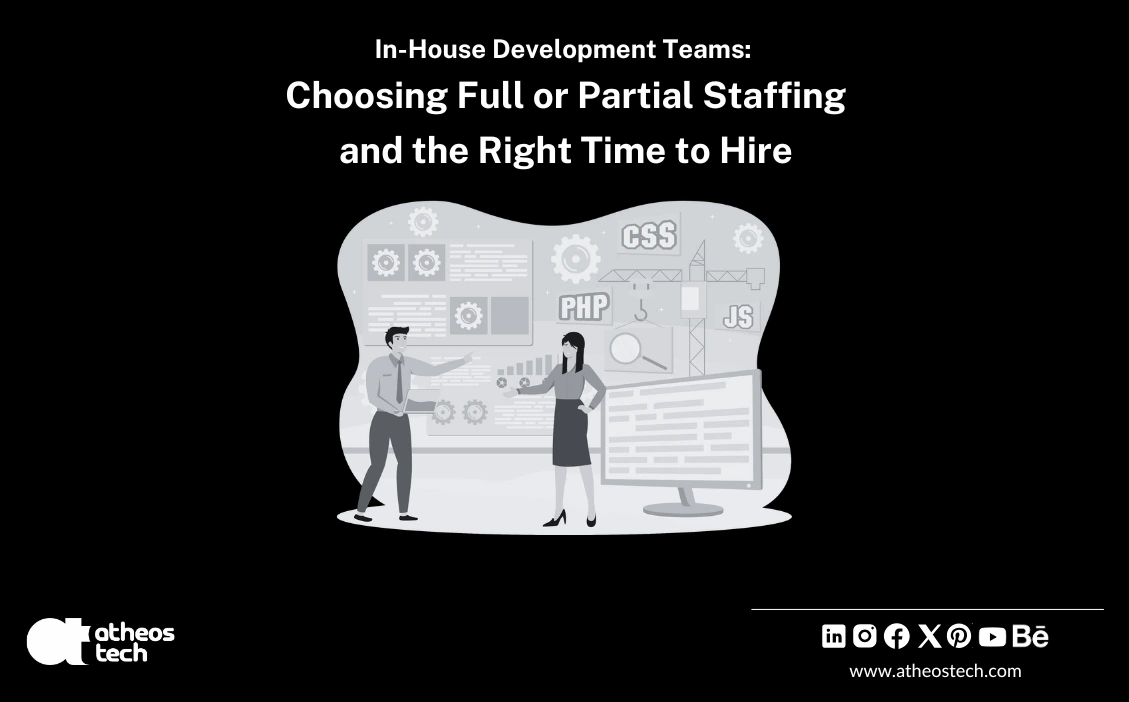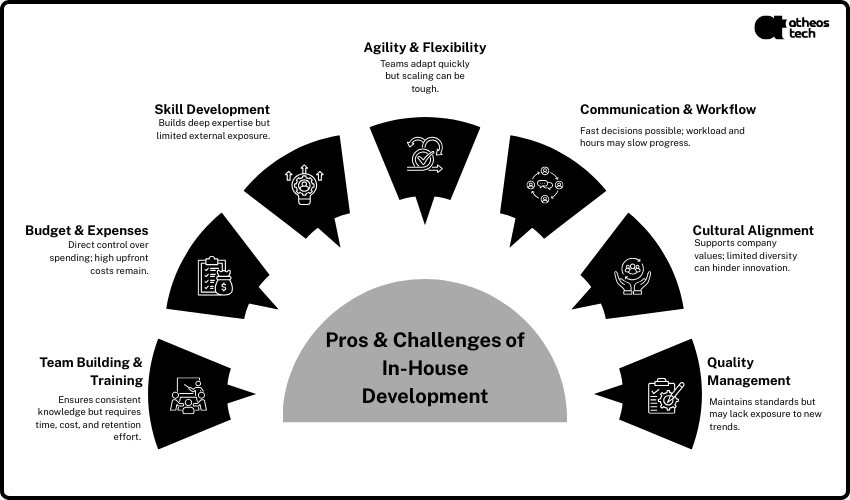
Optimizing Navigation: How to Help Users Find What They Need Fast

Are you torn between building a full in-house development team or opting for a partial setup? Choosing the right development strategy can make or break your digital projects. At AtheosTech, we’ve helped multiple businesses navigate this choice while balancing costs, efficiency, and quality.
In this blog, we’ll dive deep into the differences between full and partial in-house development, discuss when to hire in-house, and explore how leveraging a Mobile & Web Development Company can accelerate your growth. We’ll also cover insights from dedicated development teams to help you make informed decisions.
If you want to understand more about DIY strategies and when they make sense, check out DIY Development: Should I Build It Myself? (When to DIY & When Not To).
An in-house development team is a group of professionals who work directly within your organization to handle software, mobile, and web development projects. Unlike outsourcing, in-house teams are fully dedicated to your projects, giving you greater control over timelines, product quality, and internal processes.

At AtheosTech, we often recommend evaluating your business needs before deciding the size and scope of your in-house development team.
Pros:
Cons:
For a deeper comparison between DIY, in-house, and outsourced development approaches, you can explore DIY vs. In-House vs. Outsource: Choosing the Right Development Approach.
Pros:
Cons:
Pros:
Cons:
Pros:
Cons:
Pros:
Cons:
Pros:
Cons:
Pros:
Cons:
Consider the following when deciding:
A full in-house team means your organization handles all development roles internally, including web design and development, and Mobile Application Development.
Pros:
Cons:
A partial in-house team combines internal staff with external resources, often hiring freelancers or agencies for specialized tasks.
Pros:
Cons:
A dedicated development team is a group of professionals working exclusively on a project, often outsourced through a Mobile & Web Development Company. Unlike freelancers, these teams focus solely on your project, delivering high-quality solutions with scalability and flexibility.
Martin runs a mid-sized e-commerce business. He wanted to launch a mobile application to improve customer engagement. Initially, he considered hiring a full in-house team. After consulting with AtheosTech, Martin decided to start with a partial in-house team and partnered with a Mobile & Web Development Company for specialized app development.
Outcome:
Choosing the right team structure involves a thoughtful evaluation of multiple factors. Here’s a detailed guide:
Hiring an in-house team brings several challenges that must be managed carefully:
Recruitment and Talent Acquisition:
Onboarding and Training Costs:
Employee Turnover Risks:
Operational and Management Costs:
AtheosTech helps businesses navigate these challenges by providing guidance on integrating in-house and external teams effectively.
| Statistic | Insight | Business Impact |
|---|---|---|
| In-House Team Growth | 63% of companies are expanding in-house teams in 2025. | Shows stability and reliability for core projects. |
| Experience Efficiency | Teams with 3+ years tenure complete projects 30% faster. | Reduces timelines, accelerates delivery. |
| Upskilling | $3,000+ annual training per developer increases productivity by 25%. | Boosts efficiency and ROI. |
| Quality | 70% report fewer bugs and better quality with in-house teams. | Ensures higher product quality. |
| Alignment | 68% say in-house teams align better with culture and goals. | Smooth collaboration and innovation. |
To maximize efficiency and productivity, consider these best practices:
Clear Communication Channels:
Adopt Agile Methodologies:
Continuous Skill Development:
Collaborate with External Teams:
If you are looking to hire a Mobile & Web Development Company to complement or build your in-house team, AtheosTech can help.
Choosing between in-house development and a dedicated development team depends on your business needs, project scope, and resources. In-house teams offer control, alignment, and cultural integration, while dedicated teams provide scalability, expertise, and cost optimization. Combining insights from both approaches allows businesses to maximize productivity, maintain quality, and succeed in Mobile and web Development company and software projects.
Martin’s story shows how a balanced approach delivers faster results, reduces costs, and builds expertise. Leveragingl
Adding {{itemName}} to cart
Added {{itemName}} to cart